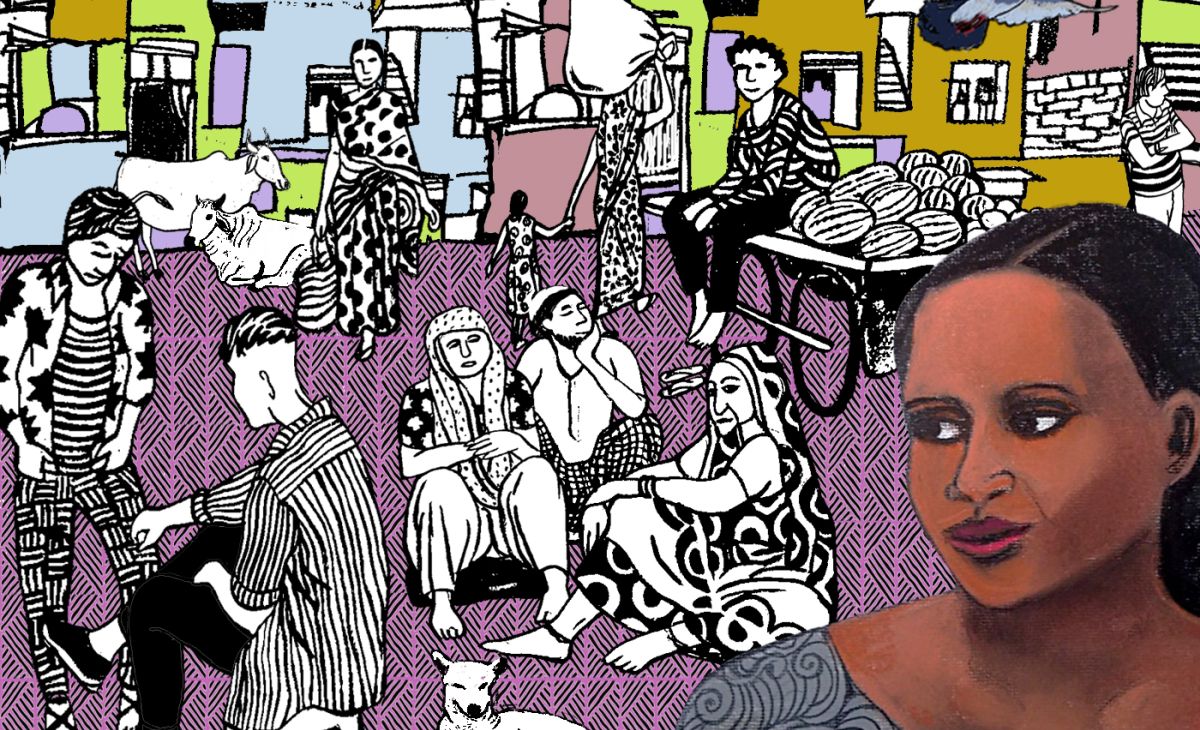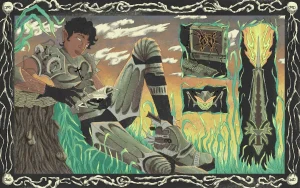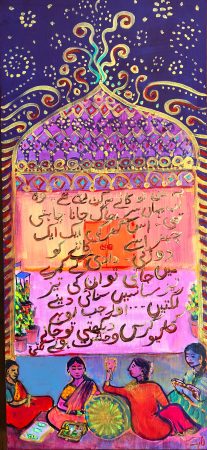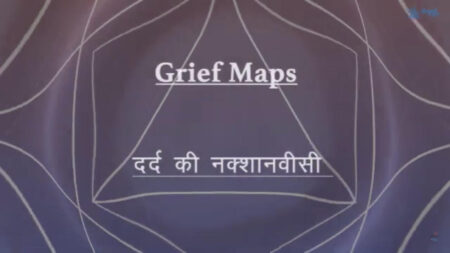Three decades ago, Ankur began an experiment in pedagogy with children, young people and communities in several marginalised neighbourhoods of Delhi. It was an experiment that combined great daring and patience and has created a whole world of young Hindi writers whose work is in literary journals and well-known anthologies. To read them or to meet them is to be continuously struck by their confident and stylish voices. In this freewheeling chat, Sharmila and Prabhat of Ankur, takes us through their process, philosophy and answers that question: how do you teach someone to write?

TTE: Ankur started with the original idea of empowering education by addressing social inequalities therein, and by reconnecting it to people’s lives. Today, the stories and authors that have emerged from Ankur’s centres are becoming part of a cultural landscape of literature. What do you think are the things that went right in applying your philosophy?
Prabhat: I think we were very conscious of the fact that we were experimenting. We didn’t go into the community to say we are going to help you. We went and requested: could you gift us 50 children and youth for us to experiment with? They, fortunately, agreed. We said Ankur was a ‘daring’ space, which was a third space; neither school, nor home. But what is going to happen in this space?
It was a space that was going to help children and youth see that their lives, their spaces, are full of stories. We said that your world is full of things others don’t have. For example, we did a learning exercise– how do you navigate small spaces?How does light change in those spaces? What does the night watchman know about night time – temporally, spatially, in terms of mood? How does the person who whitewashes your house make the old, the dated, disappear? If we turn it around like this, we see that even our spaces are full of possibilities. And hence, so are we.
One of the main things that we did was to turn the traditional teaching and activist pedagogy of telling (‘batana’) into a pedagogy of listening (‘sunna’). We said that we didn’t have answers to anything, and listening was our first job. We asked them to look at their spaces; home, school, neighbourhoods and the virtual space.
Sharmila: We were conscious of the fact that a lot of work with marginalised communities is framed in terms of issues and problems. But talking about people’s lives in terms of issues narrows their life down into issues. Fitting people into the category of ‘poor’, ‘margins’, ‘slum’ etc. reduces the possibilities they imagine for themselves. We wanted to open this up and look at their lives as a whole; it’s been our central principle. This changed the nature of our engagement, because our pedagogy evolved keeping in mind people’s immense possibilities. I feel that the ‘story’ as a form, and the process involved in writing a story – researching and exploring – helps one to transcend that feeling of ‘what do I have which will make a good story?’ It forces you to engage with yourself, your spaces, your memories, and your community. You are going among people of your community, persuading them to share their stories; you are constantly striving for these conversations. And when those stories finally take shape, they go back into the communities. That’s the final stage of the process, when the image of the writers of the story [children and young people], and the readers of the story [people of the community], changes.
TTE: Could you help take us through your process of teaching how to observe? The practice of observation is essential for any kind of documentation, mediation or imagination. Does it require the youth to separate themselves from their reality for that moment of observation?
Prabhat: We call this riyaaz, or practice. We say that they should go sit in a shared space – a Mother Dairy or a teashop – and sit and observe. Observe with your five senses and see what is happening around you. But, we do say that give the sense of sight the last priority. The eyes are usually seen as the son of the house, and the rest of the senses are treated the way girls are. So let the other senses inform this exercise. Who is crossing the road? How many kinds of voices and languages can you hear? Are they close or are they far? What sounds are pleasant, what are unpleasant? This will fill your stories. Start filling out details of your protagonists, the people around you. The minute details of their faces, their moods, temperament, persona. Chehra pakdo [Grasp the face]. What is the face of sadness? Face of hunger? What is the face of fatigue? What is the face of joy? So, we make a list of faces and make word portraits. We practice this for about one and a half years, emphasising that descriptions have to come from within, not from books.
Sharmila: So, what you were asking, that does observing require you to step away from your reality…when you are drawing on all your senses, and are vigilant about how you observe, in a very subtle way you go beyond yourself. You are present, and yet, you are removed in a sense, yes. That is why you can take in the space in its entirety; chaos, rhythm. Your focus moves from you to what you are observing.
TTE: What is the pedagogical process, thereafter, from observing to writing?
Prabhat: The observations have to arrive in to a first draft of the story. After the observation exercise we look for the opening line of the story. Every big writer also looks for that first opening line. That line emerges from them replaying their observations, and conversations. From the conversations, we pick out a line and present it back to them as a first line. If it resonates, the story begins. First, they narrate the story orally. It’s oral storytelling. The more you narrate orally, the more you develop the capacity to recognise the possibilities embedded within that story.
Then, after you’ve captured a certain sense and uniqueness in your oral storytelling, you are invited to write the story down. The written story is opened up to the collective for feedback.
Sharmila: The collective is deeply involved from the beginning to the end of an individual’s story. You practice together, you listen together, you write together. It is a deep collaboration. The stories may carry one person’s name but there are many people who helped get that story there.
Prabhat: After narrating the first draft of the story you narrate it to your group. Write one page, second page, the third. Write the eighth, fifteenth, twentieth page. It’s a durational practice. When you feel a draft is good enough, then you take it into the streets and narrate it publicly. The girls and boys take a chair and sit in a park, in front of a shop, in a Friday market, any kind of public space. And narrate his or her story to anyone willing to listen.
So, if there’s a ‘formula’ you ask for, it’s this: how to turn the confidence of narration into a confidence of writing.
How do you write the way you speak? Because, the minute you start writing, you subconsciously get caught in the ‘school essay writing’ mode. You know, where you forcefully insert beautiful words, deliberately embellish the sentences…we try and stay away from that. Write the way you speak, and maybe then, we will develop a new language, new stories will emerge, and you won’t sound like every other Hindi Department writer…
Sharmila: Including all this, we have made about 150-200 practices. These practices help channel your inner resources, and discover an original voice so that you, inadvertently, don’t end up repeating someone else’s version of your story, repeating the way other people see you. Following these practices allow you to access the visible world, the intellectual world, as well as the world inhabited by words.
We worked with the first group for about 1.5 to 2 years. After preparing the first 15-20 writers, we realised that it was possible to work like this, and to do this.
TTE: Are there any particular challenges that resurface with each group, as the youth discover their own stories as authors and narrators?
Prabhat: For example, in the beginning, everyone narrates and writes in the first person. There is a lot of ‘me, me’. And we believe that we need that to happen for a year or so; let the writing practice revolve around ‘me’. They want to be the protagonists of their own stories, because they have never been the main protagonists of their own lives. That space needs to be created and nurtured. And then we have to see how to move from ‘me’ to ‘we’, or to the third person, or even further to a world of imagination that may not be a direct representation of their life. Writing from imagination is the toughest, taking the everyday and giving it an imaginative twist, and that is the next pedagogy we are concentrating on.
TTE: How do you work with issues of gender, morality and sexuality, without being prescriptive or censoring? How do you manage to not make the stories didactic, because that is the easiest urge, especially while working around gender and sexuality?
Prabhat: We are very conscious of the fact that children and young people get caught in the morality cycle only when the adults around them look at their written expressions through the lens of what is moral and immoral. The boys and girls we work with, in fact, navigate gender and sexuality through multiple entry and exit points, much beyond any adult’s imagination. With the girls of JP Colony, we had a writing theme, ‘Our Childhood Boy Friends’. We didn’t know what they would write about, but we were aware of the tensions, and all we wanted was to help create a writing experience that expresses these tensions. We asked them to explore how far their bodies and identity allows them to go. For example, as girls, they had to write about walking about Old Delhi at night, as boys. There was a certain freedom in that writing, a release. It was a combination of imagination and fantasy.
Take Tina’s story for example, the one on Ansariji. It’s about this man in Dakshinpuri who comes up every morning to his terrace, shirtless, semi naked, ‘macho man’ demeanour. He comes up, leers at all the women on all other terraces, and goes back down. He has a daughter, who he loves deeply. One day, he tells his daughter that he will find a groom for her. And she says, ‘Please get me someone like you.’ And what he feels after that…Or take the story, Preeti, I Love You. One morning, someone wrote, ‘Preeti, I Love You’ on the gate of a school. The principal got angry and called all the Preetis of the school and humiliated them. Many of the Preetis were in love, or maybe had never been in love, and all felt various kinds of shame. It became a complex story…
Sharmila: See, usually when we explore gender, we typically do it under certain themes. ‘Discrimination’, ‘masculinity’, ‘femininity’, ‘sexuality’, ‘violence’ – these are the common structures for a gender curriculum. The other is the life skills approach, where the focus is on developing certain skills, but it’s decontextualized because it does not focus on the context of young girls and women.
There’s much more to their life than sexuality and reproductive health ‘issues’. What the form of the story allows us is to be able to look at lives in layers, in grey, beyond right and wrong.
You start looking at nuances, and try and take your engagement beyond conditioned judgements and moralities. You explore it in an open ended way and it starts coming through their stories and dialogues; multiple shades of protest and dissent. And you discover unexpected things, too – like brothers and fathers who are feminist, enablers, or a grandfather who is bringing up children like a mother – things that break binaries. The other problem is that a lot of gender work posits the society as the enemy. But that society, like it or not, is seen in your family, your neighbourhood, and it doesn’t work to continuously villainize them. What the act of writing allows you to do is to turn that around and look at all the shades of the systems you live in; because society is not just a villain, usmein bahut saari zindagi bhi hai…(there is a lot of life in it too).
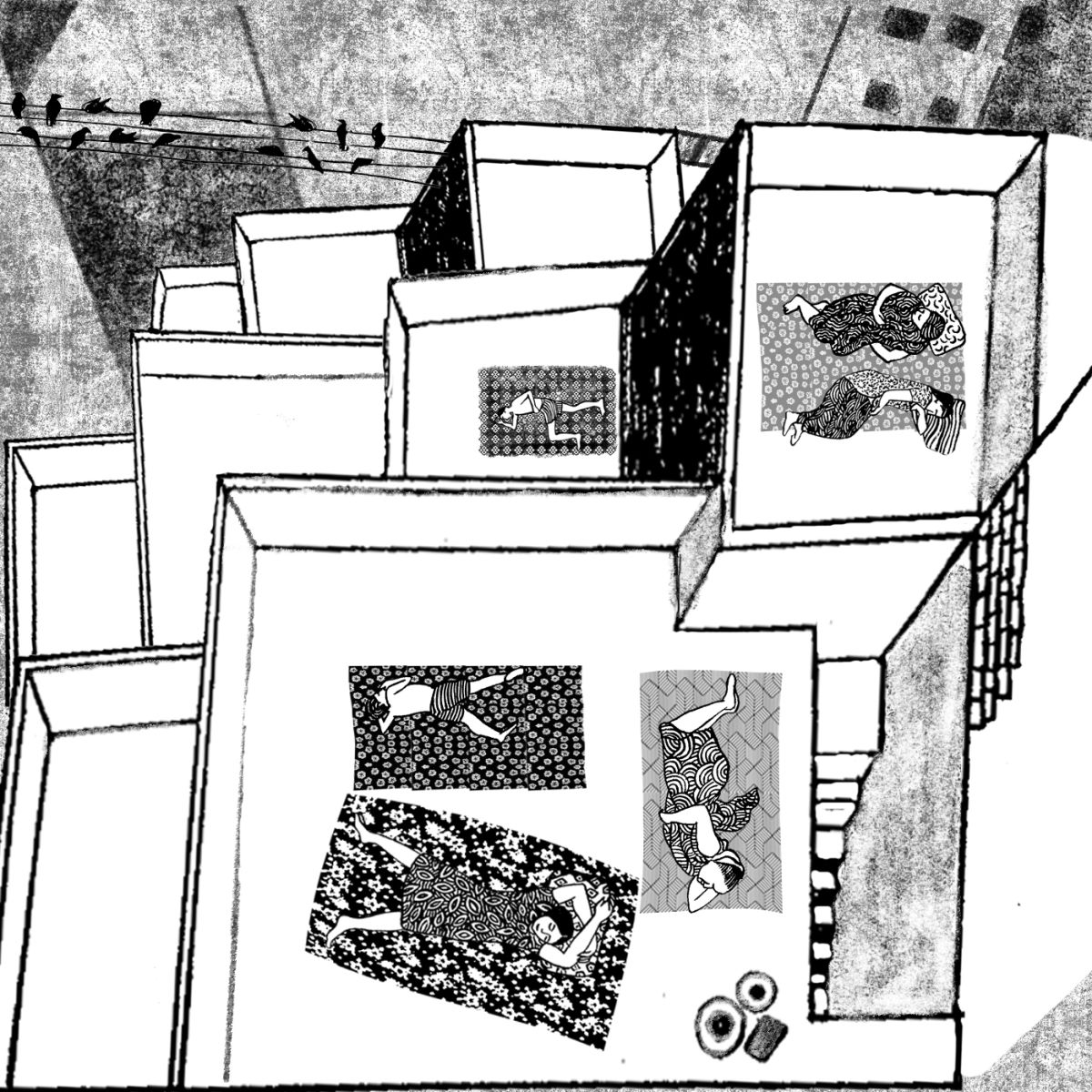
TTE: How does your work compliment, contradict or work with mainstream schools and education systems? What kind of changes have you seen in the youth and their relationship with education?
Prabhat: We are an alternative to mainstream education in every way: its discipline, grading systems, timings, notions of right and wrong, ideas around intelligence or the lack of it, concepts of less or more, success or failure… We are free in that way. We have the luxury of time, and we have the luxury of not being asked to clear an agni pariksha every year. Our students include those who have been left out of mainstream education, and they become resolute commentators.
Our whole curriculum is our neighbourhood, all the chapters emerge from here, and the writers emerge from here. Stereotypes are broken from within.
Sharmila: Our pedagogy has a particular saar(core), which does help the students to grasp the school materials better. Writing stories increases your capacity to comprehend, to write something on your own without the use of guide books, and helps you follow an argument through. As this capacity grows, how you engage and experience at school also changes. And as your writing becomes known, how the school looks at you changes. As a colleague remarked, that ever since their stories have been published in books, their schools have started calling them ‘our children’, while they never did before.
In an exercise we did with children, we discussed what were the important words that schools use. One of the words that emerged was ‘Nakal’ (to copy). So, the children wrote stories around Nakal – how they cheated, why they cheated… Because there was no judgment, and there was creativity involved, the children wrote honestly. So, in a way, I think what one is trying to do is make a gentle dent in the hierarchies. A young girl had written a story on how her dupatta was more important than her…a story in which her dupatta flies away and how the neighbours saw it. Her teacher had a very negative perception of her. But, her story got published, it was narrated in class, shared in Whatsapp groups. The teacher was very appreciative. Something shifted for her, for the school, and for us.
TTE: Finally, what is the one thing that you look for in a person’s writing, a quality other young writers could develop in their work?
Prabhat: See, the discipline of creative writing is very department centric, university centric. But that is not how new stories will emerge from neighbourhoods, villages, smaller towns and cities. We need to be open to a lack of neat endings, neat messages, or messages at all. We encourage them to let things be unresolved. An incomplete feeling…like there is more, just at the edge of the story. That the story hasn’t reached its destination, it’s still travelling, quietly taking a new turn.
Workshop
1.
2.
This is an outdoor exercise, to be done individually. Choose a public place (like a market; a road square; a park etc.) and silently observe what all happens in it. At the end of an hour, write down your observations. Repeat this exercise over a minimum of three days in the same spot, at the same time. What are the stories that start opening out? After three days, discuss these writings in your peer group.
3.
Imagine that you are someone else- someone about whom you know very little, like a shopkeeper, a taxi driver, a dhaba or restaurant manager and so on. Now write about her/ him in first person, in minimum 500 words. Share this writing within your peer group. What are the stereotypes that your story contains? Why? Based on your peer discussion, revise your writing. What are the new directions in which your thoughts begin to move?
About Ankur: Ankur writers’ anthologies include as Behroopiya Shehr (2007), by Rajkamal Prakashan, its English translation, Trickster City (2010), Penguin/Viking; Dastak (2012), Vani Prakashan, Akar Issue 37 (2013), a special issue of the literary journal edited by Priyamvad, self-published anthologies Galiyon Se/Bylanes (2002), and Chashma Naya Hai (2019). The writings of Ankur practitioners have moved into the pages of magazines (Cycle, Chakmak, The Wire) and literary journals. Ankur’s practitioners have written for a regular column in the First City. At present, Ankur’s practitioners are maintaining a regular column entitled “Ghuspaithiye/Intruder” in Hans, a leading Hindi literary magazine.


